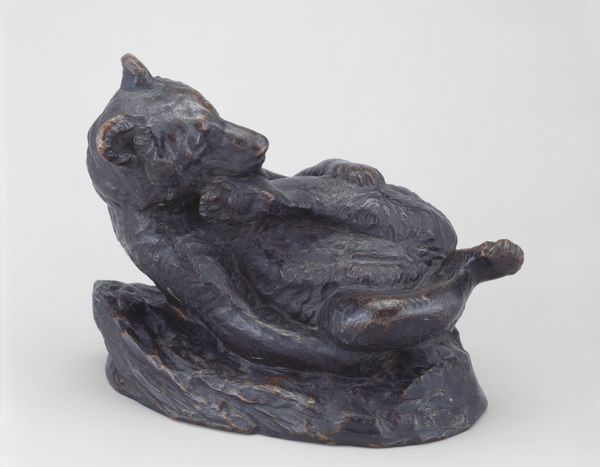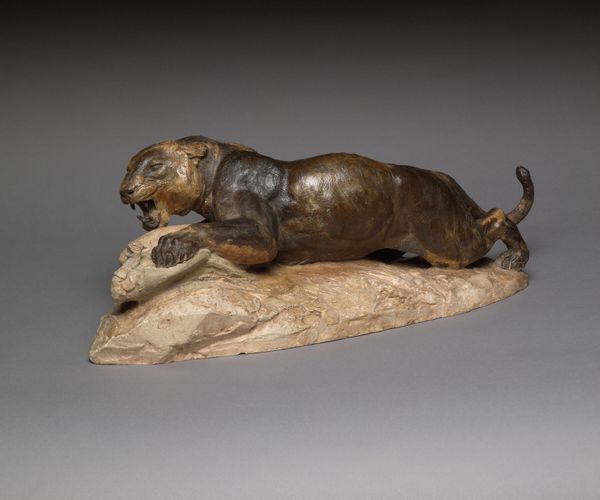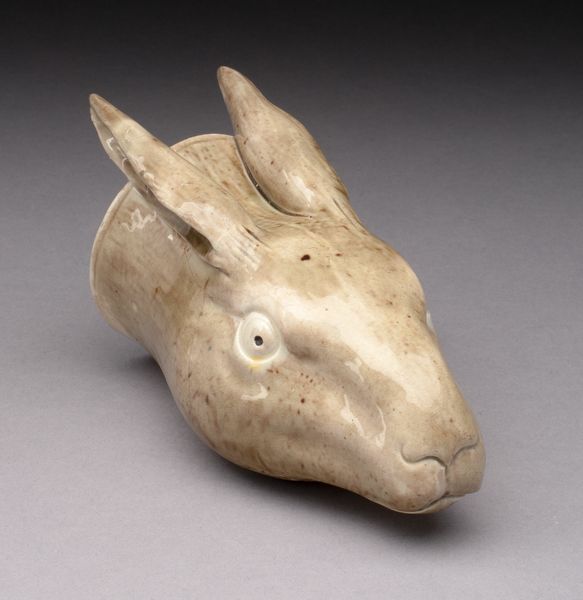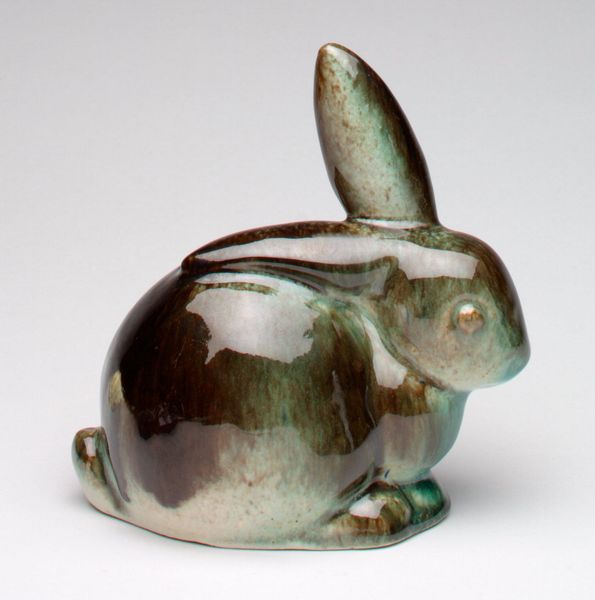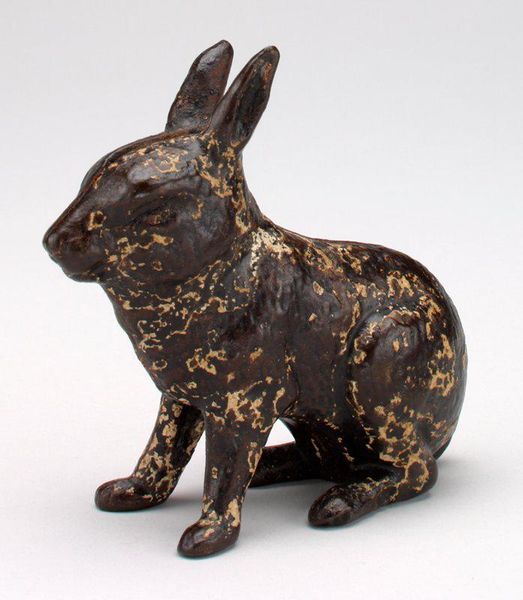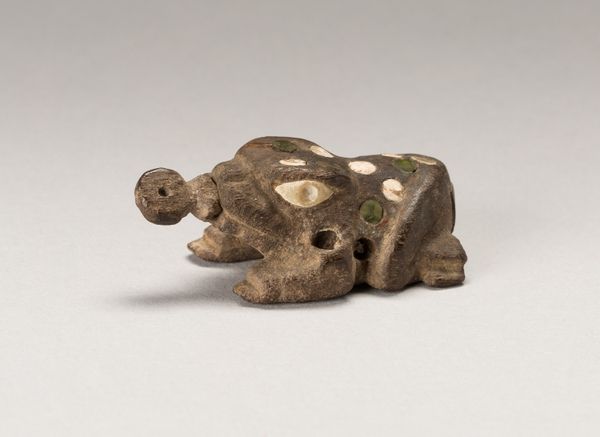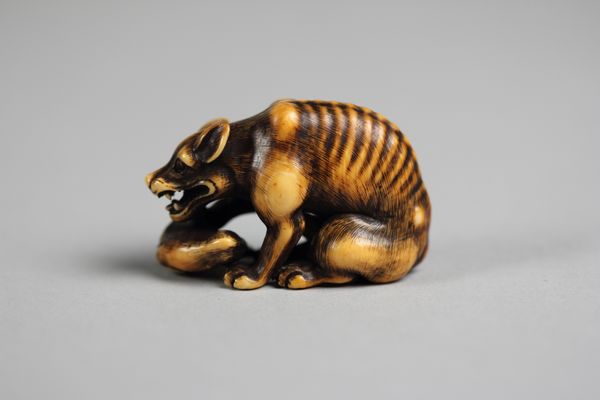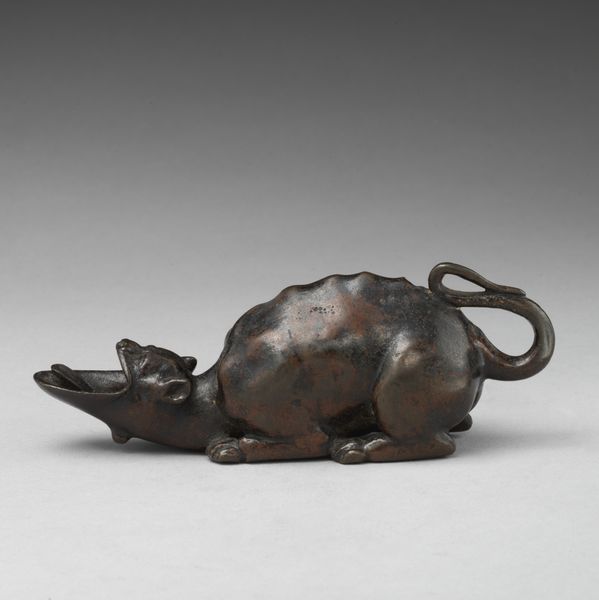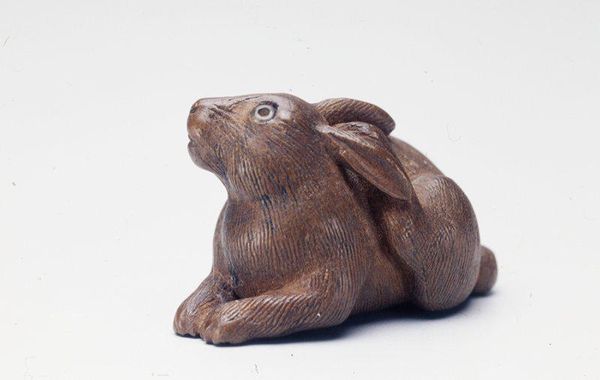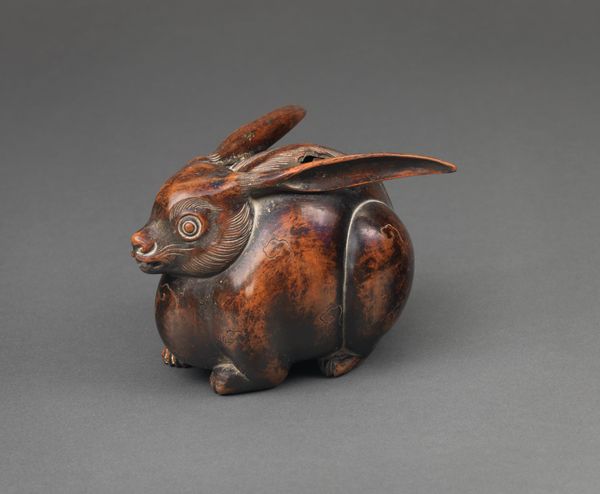
bronze, sculpture
#
sculpture
#
bronze
#
sculpture
#
modernism
#
realism
Dimensions: 4.5 cm (height) x 7.5 cm (width) x 5.5 cm (depth) (Netto)
Editor: Here we have Anne Marie Carl Nielsen's "New-Born Lamb," created in 1924 from bronze. I find its huddled form rather poignant, almost as if it's seeking shelter. What do you see in this piece, considering the historical context of its creation? Curator: It's interesting that you mention its vulnerability. This sculpture emerges from a specific socio-political milieu following the first world war. Think about the context of the war: widespread loss and the disruption of traditional pastoral ideals. The lamb, a symbol often associated with innocence and sacrifice, takes on new resonance. What does it mean to represent such a vulnerable subject during a period marked by such monumental violence and trauma? Editor: I hadn't considered the post-war context. So, the sculpture isn't simply a representation of rural life, but a commentary on innocence lost or threatened? Curator: Precisely. Nielsen, as a woman sculptor in a male-dominated field, might also be commenting on societal expectations of nurturing and caregiving during that period. This lamb could be viewed through a feminist lens, asking questions about who is responsible for care in times of crisis and who is rendered vulnerable. Does understanding Nielsen’s biography shift your understanding? Editor: Absolutely! Knowing about her gender and the historical backdrop really enriches the sculpture’s meaning beyond just a sweet animal. The bronze seems almost weighty now, burdened by that history. Curator: Indeed. And that tension – the seemingly simple subject matter imbued with complex historical and social meaning – is what makes "New-Born Lamb" such a powerful piece, and a poignant reflection of its time. Editor: I learned that a seemingly simple piece of art can hold many layers of interpretation, deeply rooted in its historical and social background. Thank you. Curator: It's a great example of how art history can intersect with broader critical and social perspectives, enriching our understanding of the artwork.
Comments
No comments
Be the first to comment and join the conversation on the ultimate creative platform.
